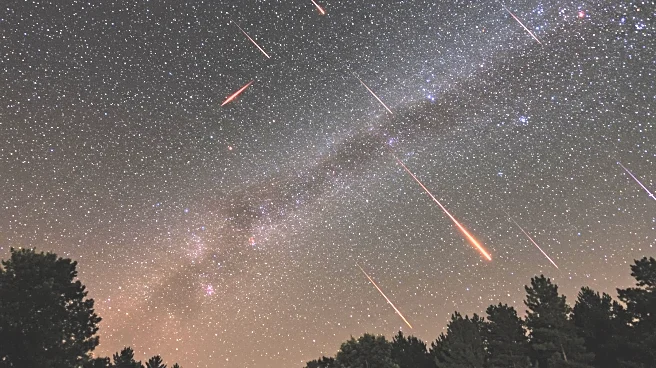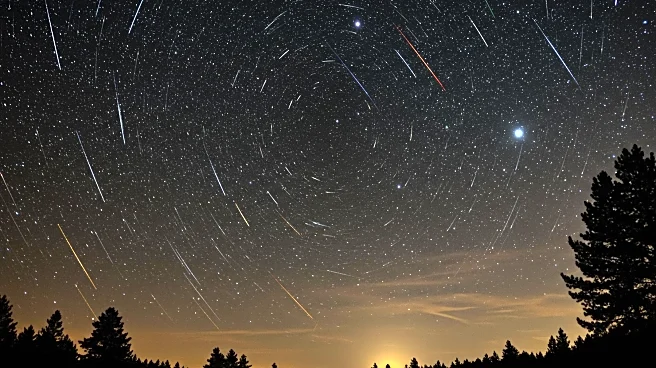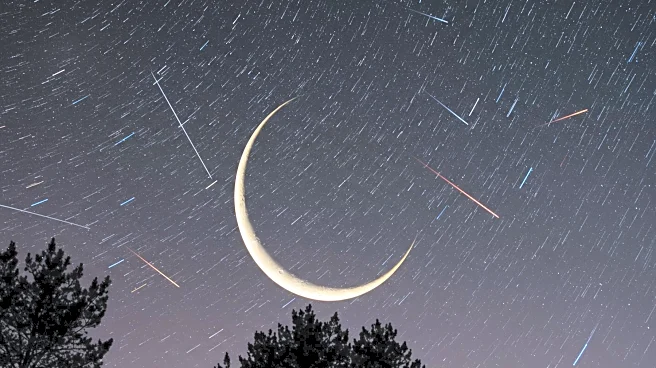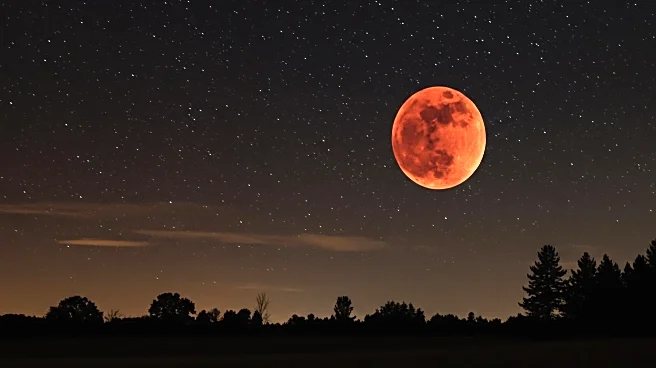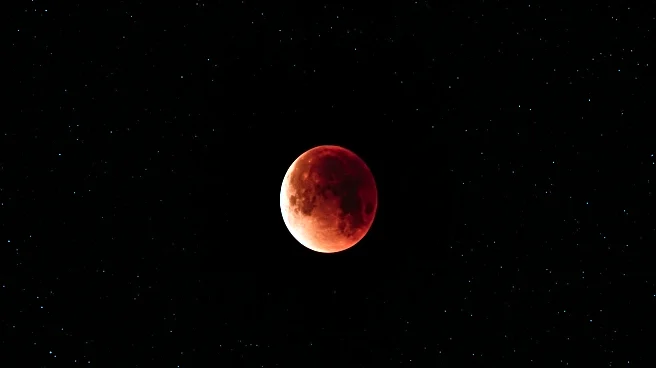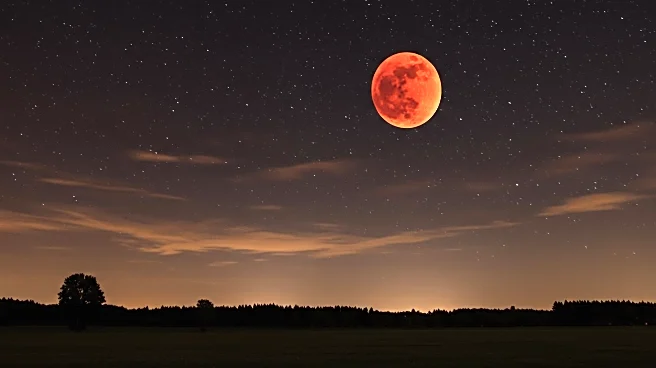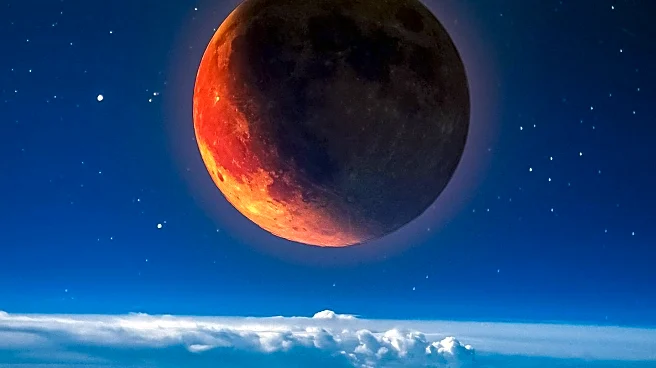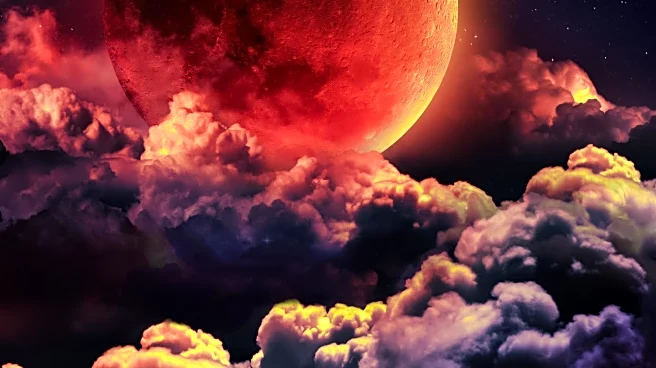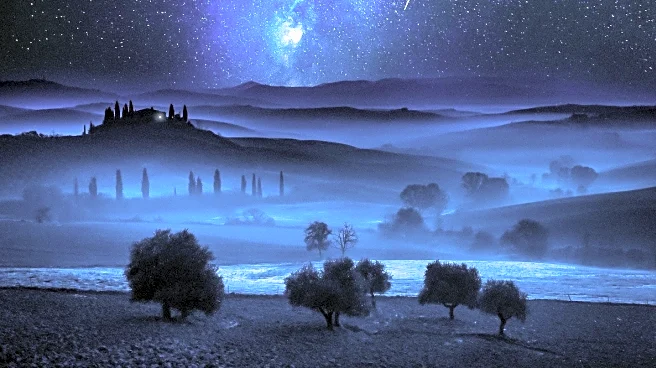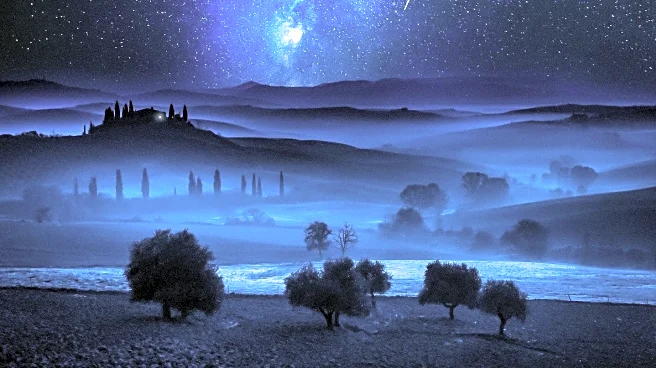What's Happening?
The annual Perseid Meteor Shower is set to peak on August 12 and 13, offering a spectacular display of meteors across the night sky. This event occurs as Earth passes through the dust cloud left by the comet Swift-Tuttle, resulting in dozens of meteors visible per hour. Known for its fireballs, the Perseids feature larger explosions of light and color, which are caused by larger particles of cometary material. However, this year's visibility may be affected by the moon, which will be 84% full, potentially reducing meteor activity by 75%. The best viewing times are before dawn in the Northern Hemisphere, with optimal conditions in dark sky areas free from light pollution.
Why It's Important?
The Perseid Meteor Shower is a significant astronomical event that draws interest from both amateur and professional astronomers. It provides an opportunity for educational engagement and public interest in space science. The event highlights the natural wonders of the universe and encourages people to explore astronomy. Additionally, it serves as a reminder of the ongoing study of comets and their impact on Earth's atmosphere. The visibility challenges posed by the moon this year underscore the importance of understanding celestial mechanics and their effects on observational astronomy.
What's Next?
As the Perseid Meteor Shower peaks, enthusiasts are encouraged to find locations with minimal light pollution for optimal viewing. The event is part of a series of astronomical occurrences in August, including the full sturgeon moon and opportunities to observe Mercury. These events offer continued engagement for space enthusiasts and the general public. Observatories and astronomy clubs may host viewing events to facilitate community participation and education. The ongoing interest in such events may inspire future initiatives in space exploration and research.
Beyond the Headlines
The Perseid Meteor Shower, along with other celestial events, contributes to the cultural appreciation of astronomy and the natural world. It fosters a sense of wonder and curiosity about the universe, potentially influencing educational and scientific pursuits. The event also highlights the importance of preserving dark sky areas to ensure future generations can enjoy unobstructed views of the night sky. As light pollution continues to be a concern, efforts to mitigate its impact are crucial for maintaining the integrity of astronomical observations.
